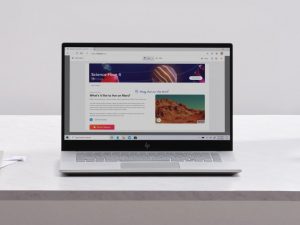
What comes to mind when you hear 14 inches? Perhaps a bit of panic, but mostly, the screen size of a laptop. While bigger may seem better, sometimes 14 inches is just right – a sweet spot between portability and productivity. You can carry it anywhere, fit it in any bag, and still have enough screen real estate to get the job done.
Whether you're a student, professional, or someone who just wants a laptop that's not too big or too small, we've got you covered with this guide to the best 14-inch laptops. From budget-friendly options to high-end models, there's something here for everyone. So sit back, relax, and let's dive into what makes a great 14-inch laptop.
The right processor
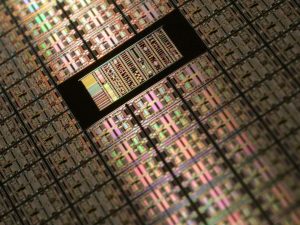
The laptop CPU market has seen some significant developments in recent years. Apple has released their ARM-based M1, M2, M2 Pro, and M2 Max chips, which offer exceptional single-core performance and battery life. AMD has captured 20% of the laptop CPU market, with plenty of options available for Ryzen CPUs. Intel's 13th-generation Core processors have already been released, but their 12th-generation Core CPUs can provide excellent value.
When it comes to gaming laptops, it's essential to strike a balance between battery life and performance. A fast processor can help with demanding games, but it may also drain your battery quickly. Gaming laptops tend to have short battery life, even when idle, due to their high power consumption.
If you're going for a high-end laptop, expect to pay at least $1,500. However, there are plenty of budget-friendly options under $800.
When measuring processor performance, PassMark and Cinebench R23 are more relevant to gamers than 3DMark or other synthetic tests that don't account for the increased latency introduced by DDR RAM and chipset components.
Here are my recommendations for various budget ranges and what to expect at each price level:
| Processor | Budget Range | Performance Expectations |
|---|---|---|
| i5-1235U | Under $600 | Basic performance |
| Ryzen 5 6600U | Under $600 | Good battery life |
| i5-12500H | $600-$1,200 | Good performance |
| Ryzen 5 6600H | $600-$1,200 | Good battery life |
| Apple M2 | $600-$1,200 | Exceptional performance |
| i7-12700H | Over $1,500 | Excellent performance |
| Ryzen 7 6800H | Over $1,500 | Excellent performance |
| Apple M1 Pro | Over $1,500 | Exceptional performance |
In summary, if you need a laptop for gaming or working with video/audio editing, a PC laptop with a fast processor is the better choice. When it comes to gaming laptops, it's essential to balance battery life with performance. And, there are plenty of options available for different budgets, with various performance expectations to consider.
Picking a good graphics
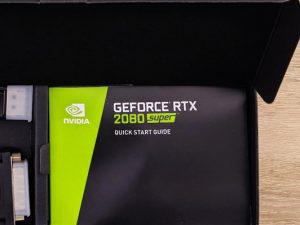
When it comes to choosing the right graphics card for a 14" laptop, it's essential to consider your needs and budget. While most people don't require a dedicated GPU, if you want to use your laptop for gaming or 3D modeling, then a discrete graphics card becomes necessary.
Nvidia currently dominates the laptop GPU market, with the RTX 30 series comprising most of the current notebook GPU market. However, with the release of the RTX 40 series, you may find laptops featuring these cards hitting the shelves soon.
With Nvidia discontinuing the Max-Q label, the exact GPU wattage is now determined by the laptop manufacturer (OEM), resulting in a wide variance in graphics performance even in laptops with the same GPU chipset.
When comparing GPUs, we use 3DMark scores to compare different models of the same company's GPUs. Meanwhile, when comparing different companies' GPUs, we use 3DMark scores from the same test (e.g., Fire Strike).
For those looking for a mid-range GPU, we recommend going for an Nvidia or AMD graphics chip since these offer enough power without breaking the bank. For those seeking to play games at high settings and above 60 FPS consistently, you'll need to look for laptops with top-notch cooling systems and high-end graphics cards (RX or GTX 1660/1650).
Here are our recommended GPUs for each price bracket:
| Price Bracket | Recommended GPUs |
|---|---|
| Minimum | High-end integrated (Iris Xe, AMD RDNA 2) |
| Recommended | RTX 3060 |
| High-end | RTX 3070 Ti; RX 6800M |
In conclusion, choosing the right GPU for a 14" laptop involves considering your needs and budget, as well as performance metrics such as benchmark scores. By following our recommendations, you can find a laptop that balances performance and affordability.
How to choose the right memory for 14 inch?
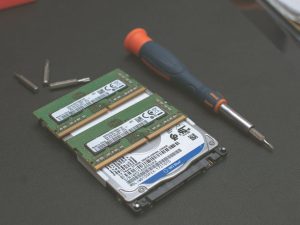
The laptop RAM market is constantly evolving, so it can be hard to know what kind of memory is the right choice for you. Let's see what distinguishes RAM for 14-inch laptops.
For starters, most mid-range laptops come with 16 GB of RAM, while high-end models provide 32 GB or more. But, let's not forget that the latest-gen Intel and AMD CPUs support DDR4 and DDR5. Of course, DDR5 is still quite expensive and requires time to mature, so you don't really need it yet.
Another important aspect to consider is upgradability. Unfortunately, it's quite difficult to find a laptop under 15 inches with expandable RAM, so expect your 14-inch notebook to have soldered memory. This means you'll have to make sure you get enough RAM right away, since you won't be able to upgrade it later.
Keeping all this in mind, here's a table of RAM configurations recommended by price range:
| Price Range | Minimum RAM | Recommended RAM | High-end RAM |
|---|---|---|---|
| Budget | 8 GB | 16 GB | 32 GB+ |
| Mid-range | 8 GB | 16 GB | 32 GB+ |
| High-end | 8 GB | 16 GB | 32 GB+ |
How to choose the right storage for 14 inch?
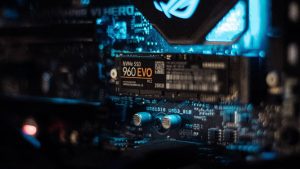
As technology advances, SSDs have become the standard for laptops. PCIe M.2 SSDs, usually NVMe, are the new norm and are much faster than their SATA counterparts. However, when choosing the right SSD for a 14 inch laptop, it's important to consider your budget and storage needs.
Budget laptops, which cost less than $900, usually come with a 500 GB SSD. Mid-range laptops, priced between $900-$2000, will have a 1 TB SSD, and high-end laptops, which cost over $2000, usually offer a 2 TB SSD. If you're tight on budget, an eMMC or traditional HDD will still perform well but at slower speeds.
When deciding how much storage you need, consider your usage. If you don't store a lot of files and rely on cloud storage services like Google Drive or OneDrive, a lower capacity SSD will suffice. However, if you require more storage for media or files, consider getting an external drive to back up your data.
When choosing an SSD, look for ones that offer NVMe and PCIe 3.0 compatibility for faster speeds. It's worth noting that Apple laptops typically offer up to 1 TB of storage, so keep this in mind if you're a heavy user.
Here are our top recommendations for SSDs based on your budget and expected performance:
| Budget | Mid-Range | High-End |
|---|---|---|
| Samsung 970 EVO | WD Black SN750 | Samsung 970 PRO |
| Crucial P1 | Adata XPG SX8200 Pro | Sabrent Rocket |
| Kingston A2000 | Intel 760p | Corsair MP600 |
Remember, while SSDs can be costly, the speed and reliability make them a worthwhile investment. Consider your storage needs and budget, and choose the SSD that fits your requirements.
My display recommendations for 14 inch
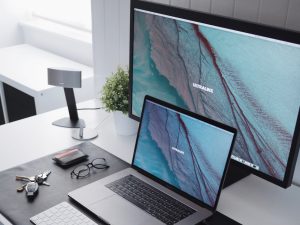
When it comes to choosing the right display for your 14-inch laptop, there are several factors to consider. The size of the display, the panel type, resolution, refresh rate, and color accuracy all play a significant role in your overall computing experience.
Size options and trade-off
While 14-inch laptops strike a balance between portability and screen real estate, the size of the display ultimately depends on your personal preference and intended use. Larger displays are ideal for multimedia and productivity tasks, while smaller displays are more portable and suitable for frequent travelers.
Panel type
The current standard for 14-inch laptop displays is an IPS or IPS-level screen, while TN panels are only found in the cheapest laptops. If you're looking for a premium experience, OLED and Mini LED backlit displays are becoming increasingly prevalent, especially on professional-grade laptops.
Resolution and color accuracy
Full HD (1920 x 1080) is still the most common display resolution, while QHD and 4K are more prevalent in premium gaming and business laptops and professional notebooks for creators. Color accuracy is also crucial, especially if you work in a field where color accuracy matters. A 90% or higher sRGB rating is ideal.
Refresh rate
High refresh rate screens are commonly found in gaming laptops, but they are not necessary for everyday use. A refresh rate of 60Hz is sufficient for most users, while gamers may prefer a 120Hz or higher refresh rate.
How to know if a display is good
When evaluating a laptop display, it's best to check for color coverage, contrast ratio, brightness level, and viewing angles. A good display should have a minimum brightness of 280 nits, 90% sRGB coverage or higher, and a contrast ratio of at least 1000:1.
Recommendations
Here are our recommendations for laptop displays grouped by price range and panel type:
- Minimum: TN/IPS; 280 nits
- Recommended: IPS; 300 nits; 90% sRGB
- High-end: IPS/OLED; 380 nits; 100% sRGB
Overall, choosing the right display for your 14-inch laptop ultimately depends on your intended use and budget. By prioritizing factors such as panel type, resolution, color accuracy, and refresh rate, you can find a display that meets your needs and enhances your overall computing experience.
The best battery for 14 inch in 2022
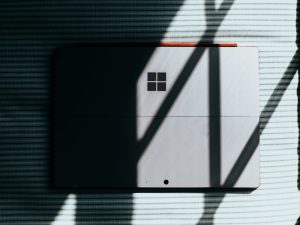
When it comes to choosing a laptop, battery life is a crucial factor. With battery technology becoming more affordable, budget laptops can achieve decent battery life of up to 6 hours. However, power-hungry components such as a high-end CPU, GPU, and bright high refresh rate display can take a toll on the battery runtime.
If you're in the market for a 14-inch laptop, there are a few things to consider. For MacBooks, they're known for their excellent battery life, and the latest MacBook Air can last up to 15 hours on a single charge, which is impressive even by Apple's standards. Battery capacity isn't as important on larger laptops designed as workstations or desktop replacements. Still, 14-inch laptops are designed to have longer battery life.
Another factor to consider is how quickly the laptop charges, which is determined by the wattage of your charger. When comparing the battery performance of laptops, there are three ways to judge – video playback, web browsing, and gaming. Web browsing runtime is the most representative of typical laptop use.
Here are our recommendations for various budget categories for 14-inch laptops:
| Minimum | Recommended | High-end |
|---|---|---|
| 5 hours | 7 hours | 12 hours |
Remember, if you need to squeeze every last drop of battery life out of your laptop, a high-quality power bank can be an excellent option.
5 Best Laptops for 14 inch
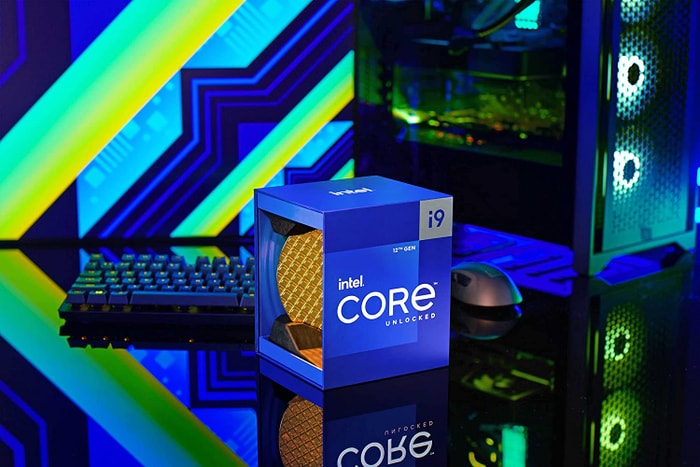
1.LGA1700 600set 125W
14 inch laptop- Awesome processor (i9-12900K)
- Featherweight (0.99 lbs)
- One of most affordable laptops with an Intel i9 processor
- No SSD
- No IPS Panel (subpar viewing angles)
- Its screen gives away its price
Alternatives
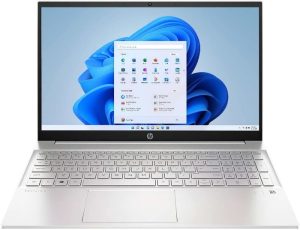
HP Pavilion
- First-class display (15.6 IPS Touch)
- First-class memory amount (32GB)
- Its screen gives away its price
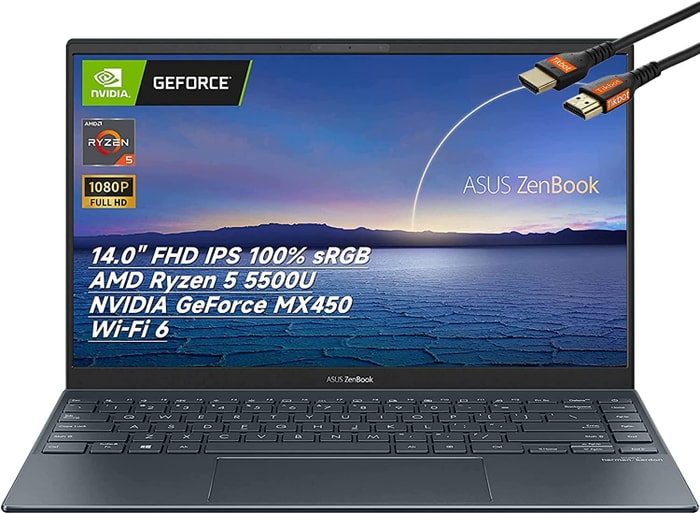
2.ASUS Zenbook
ASUS Zenbook UM425QA is a powerful yet portable laptop that delivers excellent battery life.- Excellent battery life
- Compact dimensions and low weight
- Powerful 8-core processor
- Bright display with good quality IPS matte screen
- Soldered RAM that cant be expanded
- Weak Wi-Fi
- Runs hot on the Performance profile, and the hot air blows into the screen
- No finger-sensor or touchscreen option
Summary
ASUS Zenbook UM425QA is a lightweight, slim laptop that delivers impressive performance for everyday use and demanding loads. The 8-core Ryzen CPU and 63 Wh battery make it a great choice for users who prioritize power and battery life in a compact package. However, it has some drawbacks such as soldered RAM and weak Wi-Fi.
Reviews
Alternatives
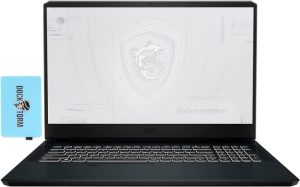
MSI WE76 11UK
- Solid processor (i7-11800H)
- Splendid graphics card (RTX A3000)
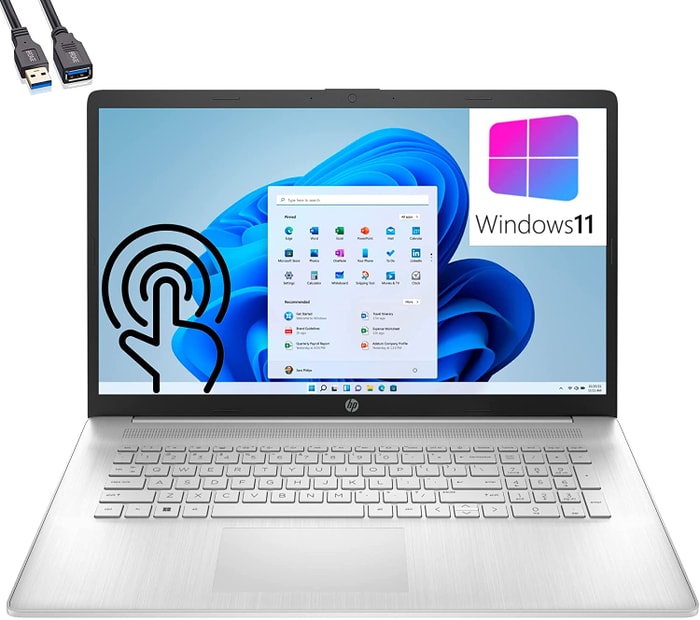
3.HP 17
14 inch laptop- Terrific memory amount (64GB)
- Featherweight (0.37 lbs)
- Gigantic 4TB SSD
- Numpad
- Ordinary processor (i7-1255U)
- No IPS Panel (worse contrast)
Alternatives
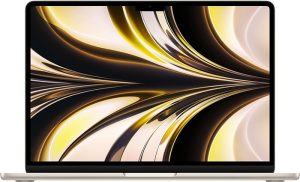
Apple MacBook Air M2
- Sleek and slim design
- Good performance for most tasks
- High starting price
- Limited external display support
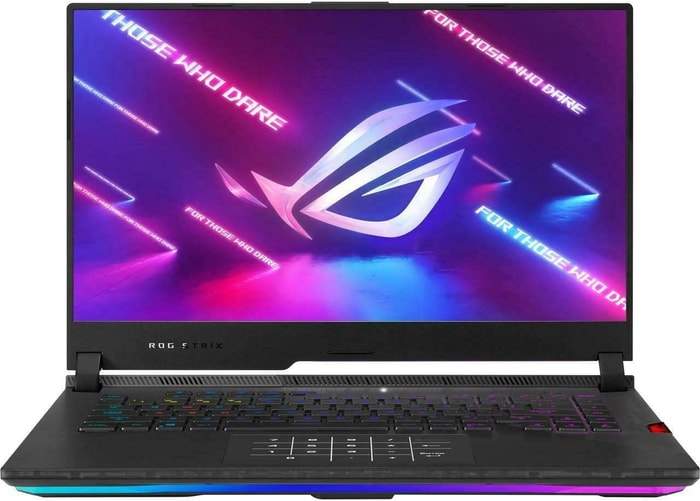
4.ASUS ROG Strix Scar
ASUS ROG Strix Scar: An excellent laptop for enthusiast gamers, but with some concerns.- Sturdy construction
- Fast Wi-Fi 6E
- Excellent response times and no PWM
- Wide color gamut coverage with Dolby Vision support
- Limited display angle
- High heat and noise emissions under load
Summary
The ASUS ROG Strix Scar is a sturdy 14-inch laptop that comes with an improved WQHD 240Hz panel, Intel Alder Lake Core i9-12900H, and a 150W Nvidia RTX 3070 Ti. It offers excellent performance, fast Wi-Fi, and no PWM. However, it has some areas of concern, such as high heat and noise emissions under load, limited display angle, and poor battery backup.
Reviews
Alternatives
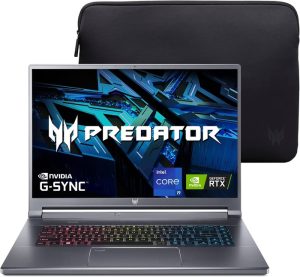
Acer Predator Triton 500
- High performance capabilities
- Excellent, bright 240-Hz display
- Soldered-in RAM
- Inaccessible SSD

5.ASUS ROG Strix Scar G733CX-XS97
ASUS ROG Strix Scar G733CX-XS97 offers high-end gaming performance with a QHD panel and stable fan noise.- Good QHD panel with 240 Hz
- High and stable gaming performance
- TB4, Wi-Fi 6E, and PCIe 4.0
- Relatively quiet fans while gaming
- Inconsistent SSD performance
- Additional premium for HX CPU isnt worth it
- No webcam
- Electronic noises
Summary
With high-end gaming performance and a good QHD panel with 240 Hz, ASUS ROG Strix Scar G733CX-XS97 offers stable fan noise while gaming. The laptop has TB4, Wi-Fi 6E, and PCIe 4.0, but lacks a webcam and has inconsistent SSD performance and electronic noises.
Reviews
Alternatives
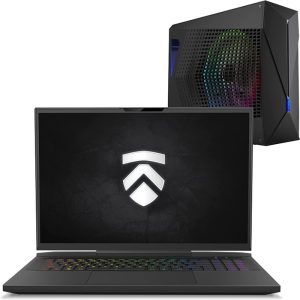
Eluktronics MECH 17 GP2 Liquid Cooled
- Terrific processor (i9-13900HX)
- Superb graphics card (RTX 4090)
Table of the Best Laptops for 14 inch
| Laptop | Price (approx) |
| LGA1700 600set 125W | |
| ASUS Zenbook | |
| HP 17 | |
| ASUS ROG Strix Scar | |
| ASUS ROG Strix Scar G733CX-XS97 |